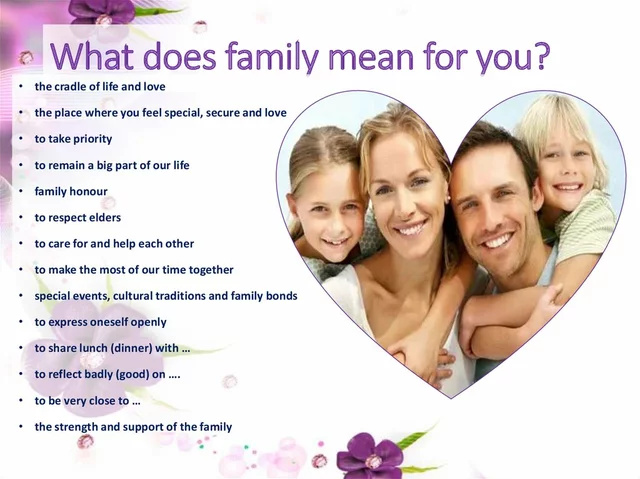Introduction to Sarcoptes scabiei: The Invisible Invader
Before diving into the life cycle of Sarcoptes scabiei, let me introduce you to this tiny, yet immensely impactful creature. Sarcoptes scabiei, commonly known as the human itch mite, is a microscopic parasite that infests the skin of humans and animals. These mites are responsible for causing scabies, an itchy and highly contagious skin infection. As they burrow into the skin, they lay their eggs, leading to an infestation that can be difficult to eradicate.
Throughout this article, I will discuss the life cycle of Sarcoptes scabiei, its impact on human health, and how to prevent and treat scabies infestations. By understanding the life cycle and consequences of this minuscule mite, you can take action to protect yourself and your family from this unwelcome invader.
Understanding the Life Cycle of Sarcoptes scabiei
The life cycle of Sarcoptes scabiei is crucial to understanding how to prevent and treat scabies infestations. The life cycle consists of four stages: egg, larva, nymph, and adult. It begins when the adult female mite burrows into the skin and lays her eggs. These eggs hatch into larvae within 3-4 days, and the larval stage lasts for about 3-4 days as well.
After the larval stage, the mite molts into a nymph. This nymphal stage lasts for about 4-6 days. During this time, the nymphs continue to burrow through the skin and feed on skin cells. Finally, the nymphs molt into adult mites, which can live for 2-4 weeks. Adult males and females mate, and the females continue to lay eggs, perpetuating the infestation.
Recognizing the Symptoms of Scabies
Scabies infestations are characterized by intense itching, particularly at night. The itchiness is caused by an allergic reaction to the mites, their eggs, and their waste products. The itching can be so severe that it leads to sleeplessness and even psychological distress in some cases.
Apart from the itchiness, scabies can also cause a rash, which often appears as small red bumps or blisters. These rashes are most commonly found in the folds of the skin, such as between the fingers, in the armpits, or around the waist. Sometimes, the burrows created by the mites can be seen as tiny, raised lines on the skin.
Transmission and Risk Factors for Scabies
Scabies is highly contagious and can be easily transmitted from person to person through direct skin-to-skin contact. It can also be spread through contact with infested clothing, bedding, or towels. Scabies tends to spread quickly in crowded living conditions, such as nursing homes, hospitals, and prisons.
Anyone can get scabies, regardless of age, gender, or personal hygiene. However, certain factors may increase the risk of contracting scabies. These factors include having a weakened immune system, living in crowded conditions, and having close contact with someone who has scabies.
Diagnosing Scabies: Seeking Professional Help
If you suspect that you or someone you know has scabies, it is important to seek medical advice as soon as possible. A healthcare professional can confirm a diagnosis by examining the affected skin and taking a skin scraping to look for mites, eggs, or mite feces under a microscope.
Early diagnosis is crucial in preventing the spread of scabies to others and initiating appropriate treatment. If left untreated, scabies can lead to secondary bacterial infections and other complications, making it even more difficult to manage.
Treatment Options for Scabies Infestations
Treating scabies typically involves the use of prescription medications called scabicides. These medications are applied directly to the skin and are designed to kill the mites and their eggs. Common scabicides include permethrin cream, lindane lotion, and ivermectin tablets.
In addition to using scabicides, it is important to wash all clothing, bedding, and towels that may have come into contact with the infested person. Vacuuming carpets and upholstered furniture can also help to remove mites and their eggs from the environment.
Prevention Strategies: Staying Scabies-Free
Preventing scabies is primarily about avoiding direct skin-to-skin contact with an infested person and maintaining good personal hygiene. Frequent handwashing, regular bathing, and laundering of clothing and bedding can help to reduce the risk of scabies transmission.
In situations where scabies is prevalent, such as nursing homes or hospitals, implementing strict infection control measures, such as isolation of infested individuals and thorough cleaning of the environment, can help to minimize the spread of the infection.
Conclusion: Protecting Your Health and Well-Being
In conclusion, understanding the life cycle of Sarcoptes scabiei and its impact on human health is essential to preventing and treating scabies infestations. By recognizing the symptoms, seeking prompt medical attention, and following appropriate treatment and prevention strategies, you can protect yourself and your loved ones from this uncomfortable and potentially harmful skin infection.
Remember, knowledge is power, and by being informed about scabies and its causes, you are better equipped to take control of your health and well-being.





20 Comments
jana caylor
Great overview! I appreciate how you broke down each stage of the mite’s life cycle and linked it to practical prevention steps. The clear headings make it easy to skim, and the inclusion of treatment options is especially helpful for anyone dealing with an outbreak. Thanks for the thorough write‑up!
Vijendra Malhotra
While the scientific details are solid, it’s important to recognize that scabies remains a major public health issue in densely populated regions of India, where sanitation challenges exacerbate transmission. Health education campaigns must address cultural stigmas that prevent people from seeking timely care. Ignoring these socio‑economic factors only prolongs suffering.
Nilesh Barandwal
Scabies! The itch that haunts nights; the burrows that mark battlefields on skin; the misery that spreads unseen!
Elise Smit
Your supportive tone really shines through, especially when you emphasize the role of proper laundry and environmental cleaning. It’s reassuring to see a balanced mix of medical advice and practical home remedies. Keep empowering readers with clear, actionable steps.
Sen Đá
It is imperative to note that adherence to prescribed scabicidal regimens must be meticulous; any deviation can result in treatment failure and potential resistance. Moreover, environmental decontamination should not be overlooked, as lingering eggs may precipitate reinfestation. Compliance, therefore, is non‑negotiable.
LEE DM
I like how you highlighted both individual and institutional responsibilities in preventing scabies spread. Simple measures like regular handwashing and thorough bedding washes can make a huge difference in communal settings.
mathokozo mbuzi
Indeed, one might inquire whether current infection‑control protocols in hospitals sufficiently address the resilience of mite eggs. Are there recommendations for enhanced sterilization techniques that could mitigate recurrence?
Penny X
It is a moral imperative that societies do not turn a blind eye to the plight of scabies sufferers, especially the vulnerable populations in overcrowded institutions. Ignorance, cloaked as complacency, only serves to perpetuate suffering.
Amy Aims
Absolutely agree! Your optimistic outlook makes the daunting topic feel manageable 😊. Let’s all stay vigilant and keep our homes clean!
Shaik Basha
yo, i totally get the itch struggle - that mite is a real pain in the butt! make sure u wash all the stuff real good, otherwise it’ll keep comin’ back.
Michael Ieradi
Indeed; proper washing, thorough vacuuming, and consistent medication-these are the pillars of effective eradication; neglect any, and recurrence looms.
Stephanie Zuidervliet
What a nightmare that itch can be!
Olivia Crowe
It’s a relentless torment, yet knowledge empowers us to conquer it.
Aayush Shastri
Excellent points! Emphasizing community outreach and culturally sensitive education can truly reduce scabies outbreaks in diverse populations.
Quinn S.
The article, while comprehensive, fails to cite recent WHO guidelines that mandate a single dose of ivermectin as first‑line therapy in endemic regions; this omission is medically irresponsible and must be rectified immediately.
Dilip Parmanand
Let’s keep the momentum going! Small daily habits-like washing hands and changing sheets regularly-can dramatically cut down transmission rates.
Sarah Seddon
Imagine a world where every bedroom smells fresh, every pillowcase is crisp, and the dreaded midnight scratching becomes a thing of the past - that’s the vision we’re striving for, and you’re a vital part of making it happen!
Ari Kusumo Wibowo
Seriously, if you’re not cleaning your stuff regularly, you’re just begging the mites to move in. Get your act together and stop spreading the itch.
Hannah Gorman
While I acknowledge the article’s attempt to inform the public about Sarcoptes scabiei, it falls short in several critical aspects that deserve thorough examination. First, the piece oversimplifies the epidemiology of scabies, glossing over the nuanced differences between endemic and epidemic forms that vary across regions and socioeconomic strata. Second, the described treatment protocols lack specificity regarding dosage, duration, and contraindications, which could mislead lay readers into improper self‑medication. Moreover, the discussion neglects emerging resistance patterns to commonly used scabicides, an issue that has been documented in multiple peer‑reviewed studies. Additionally, the article fails to address the psychological burden that chronic itching imposes on patients, a factor that is as debilitating as the physical manifestations themselves. The omission of supportive counseling strategies or mental health referrals leaves a gap in holistic care. Furthermore, the environmental decontamination section does not differentiate between temporary accommodations such as hotels and long‑term settings like nursing homes, where protocols differ substantially. In terms of preventative measures, the recommendation to “maintain good personal hygiene” is vague and does not consider cultural practices that influence bathing frequency. The lack of visual aids, such as diagrams of mite burrows or photographs of typical lesions, reduces the educational impact for visual learners. It is also noteworthy that the article does not cite any recent guideline updates from authoritative bodies like the CDC or WHO, which undermines its credibility. While the language is accessible, the occasional misuse of medical terminology can create confusion among readers seeking reliable information. The narrative would have benefited from a concise summary table outlining the life‑cycle stages, associated symptoms, and corresponding interventions. Finally, the concluding paragraph, though motivational, repeats earlier points without offering new insights or actionable next steps. In sum, the article serves as a rudimentary introduction but requires significant augmentation to function as a comprehensive resource for both clinicians and the general public.
Tatiana Akimova
Point taken; let’s tighten the content, include up‑to‑date guidelines, and add clear visual aids to ensure readers get accurate, actionable information without the fluff.